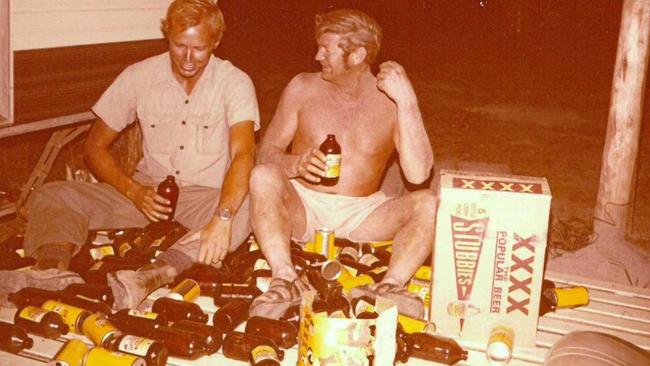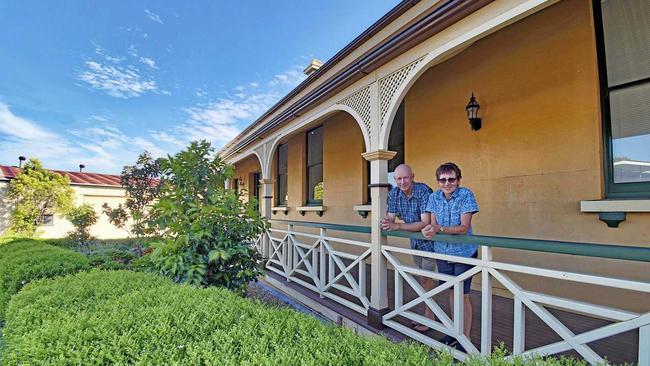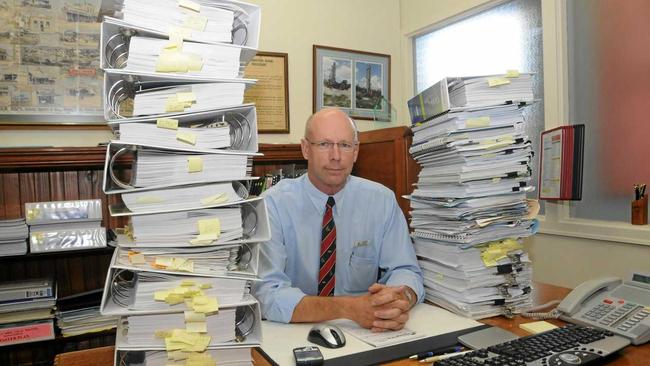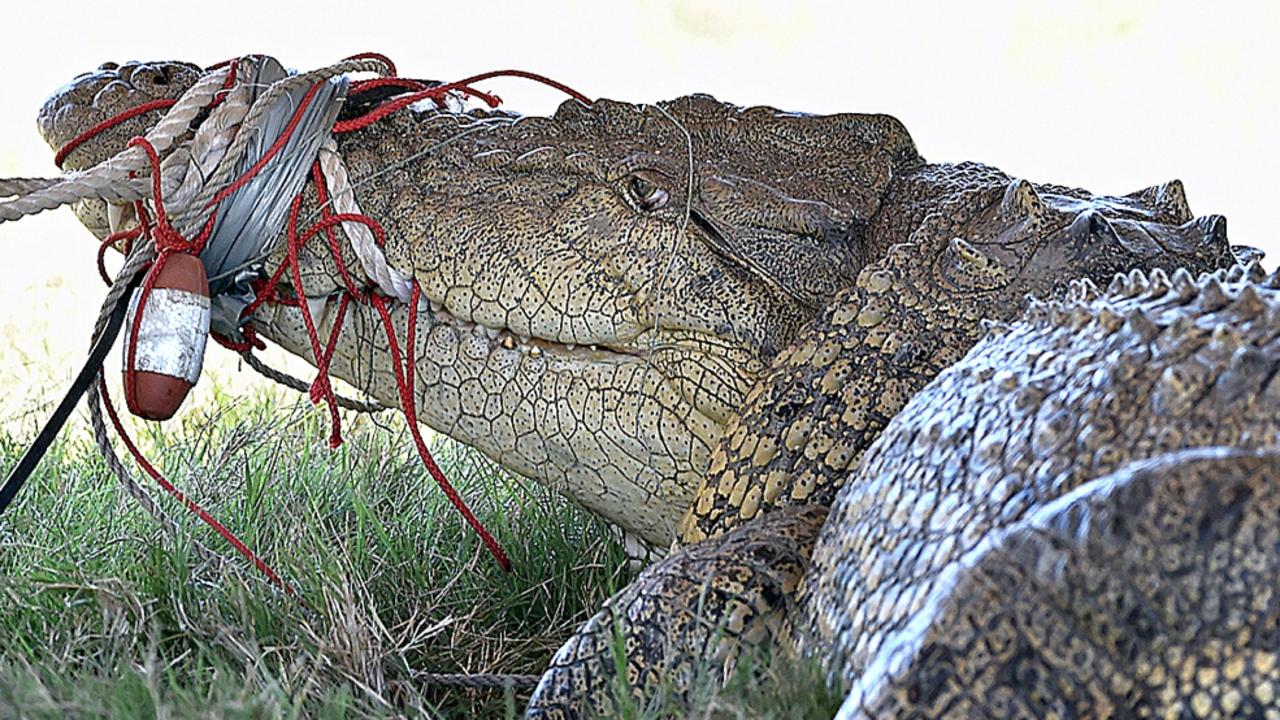'The last of his kind' has left his mark on this region
Part 1 of local historian Dr Elaine Brown's series on the life, interests, and achievements of Bob Fredman, Gympie's former 'Engineer for Everything'.

Gympie
Don't miss out on the headlines from Gympie. Followed categories will be added to My News.
WHEN young Bob Fredman arrived for work experience with Widgee Shire Council in 1974, he was given a brush hook and a water bottle and told to slash the grass in the traffic island in the middle of the Bruce Highway at the Skyring Creek turn-off.
This was called being "on the tools”.
"I got the job done in half a day - and quickly learnt about sweat and blisters,” Bob said.
After graduating in engineering from Queensland University, he joined Widgee Shire in 1977, working under the late shire engineer Don Clarkson.

His first assignment was to survey, design and build 26 kilometres of the new coast road from Tin Can Bay to Maryborough, which was funded from the forced cessation of sand-mining on Fraser Island.
This was the last time council workers camped on the job, and Bob's workmates taught him a lot that the university had not.
During his 40-year career, Bob worked for three different councils without moving from his desk.
Even after amalgamations in 1993 and 2008, the location 242 Mary St remained the council's head office. From an engineering perspective, these amalgamations were a great success. Each time, the skill-sets and plant fleet were complementary and the works staff willing and able.

"I've been incredibly lucky to have had great people to work with,” Bob said. "I always preferred to employ locals or professionals who undertook to become locals. Most of my team still live in the region and remain very good friends.”
Bob has worked under two shire engineers, five CEOs, five mayors and many councillors.
He notes that the two "home-grown” CEOs were outstanding. They ruled with their hearts as well as their heads and created a great culture.
For much of his career, Bob's days began at 6am with a kilometre swim or a run, followed by a visit to the John St depot to see men and machines off to work.
After breakfast, he turned up at the office for a day of meetings and paperwork.
Floods and storms have been part of Bob's life, and he liked to be on the road, day and night, during these events.

A trained bureaucracy is now in place to respond to emergencies but, prior to this, the engineer played a major role in flood response, in conjunction with the SES.
Working with the late Col Chapman - SES controller, local councillor and a real gentleman - was a pleasure.
Bob recalls the 1999 flood, the biggest in 100 years. He's still in awe of the effort the staff put in, as they operated the flood boats, provided up-to-date information and quickly restored local roads.
In 2012, the Queensland Reconstruction Authority stated that Gympie Regional Council was among the leaders in getting action on flood repairs.
From 1995 to 2012, Bob served as director of "all things engineering”, and was probably the last of the traditional shire engineers.
When a new CEO adopted an alternative structure, Bob remained a director but without responsibility for the depot-based workforce. He then turned his attention to strategic infrastructure planning and projects such as the Gympie Aquatic Recreation Centre.
Bob saw mixing in the community and listening to a wide range ofideas as part of his job.

"Members of community groups are a barometer of public opinion, and their feedback has often guided me,” he said.
He served for many years volunteering in Gympie's Apex and Rotary clubs, the Mary Valley Heritage Rail and Mary River Catchment Co-ordinating Committee, and is still chairman of the Gympie National Trust group. His wife Debbie has been active in many service organisations.
Bob has long had an interest in Australian colonial furniture, which he collects and lovingly restores. He has published many research articles and is regarded as a national authority on the subject.
His passion for preserving the best of Gympie's heritage for future generations has involved him in the restoration of the old AJS Bank and Lands Office buildings in Channon St, the Zig Zag Garden in Young St and the old Gympie Railway Station.

As lead officer, Bob wrote the council's case for the 2008 amalgamation and fought in the battles to oppose the Traveston Crossing Dam (2006-09) and the proposed re-routing of the Bruce Highway around Southside (2004-05).
He was an expert witness in the landmark Rainbow Shores development court case (2011-12).
"Due to high stakes and high drama, those issues were very taxing on me and those around me,” he said.
"I'll never forget the strength, intelligence and passion in the community response each time.”
The most challenging period of his time with the council was contending with colourful "stories” in a second Gympie newspaper that strongly opposed the status quo and The Gympie Times.
In the lead-up to the 2008 elections, Gympie saw two bitterly opposed parties - Active8 and Integrity. The council and its employees survived; one party and the second newspaper did not.
Bob admits that, over the years, he hasn't been able to please everyone.
Complainants often assumed he didn't appreciate their problems, but he understood them very well, because he lives on a gravel road, with trucks, dust (he gets asthma too!), poor drainage and no speed limit.
He also has to use an unmaintained road.
As a council officer, he had to be impersonal and consistent, and adhere to a budget, which was never as much as he wanted. But he would have liked to say "yes” more often.
Bob stands by his statement in a letter to The Gympie Times after his abrupt departure from the council in 2016.
"It has been a great honour and a privilege to do my best for the people of the Gympie region, and a sincere thank-you goes to you for giving me a great career in a great place.”


